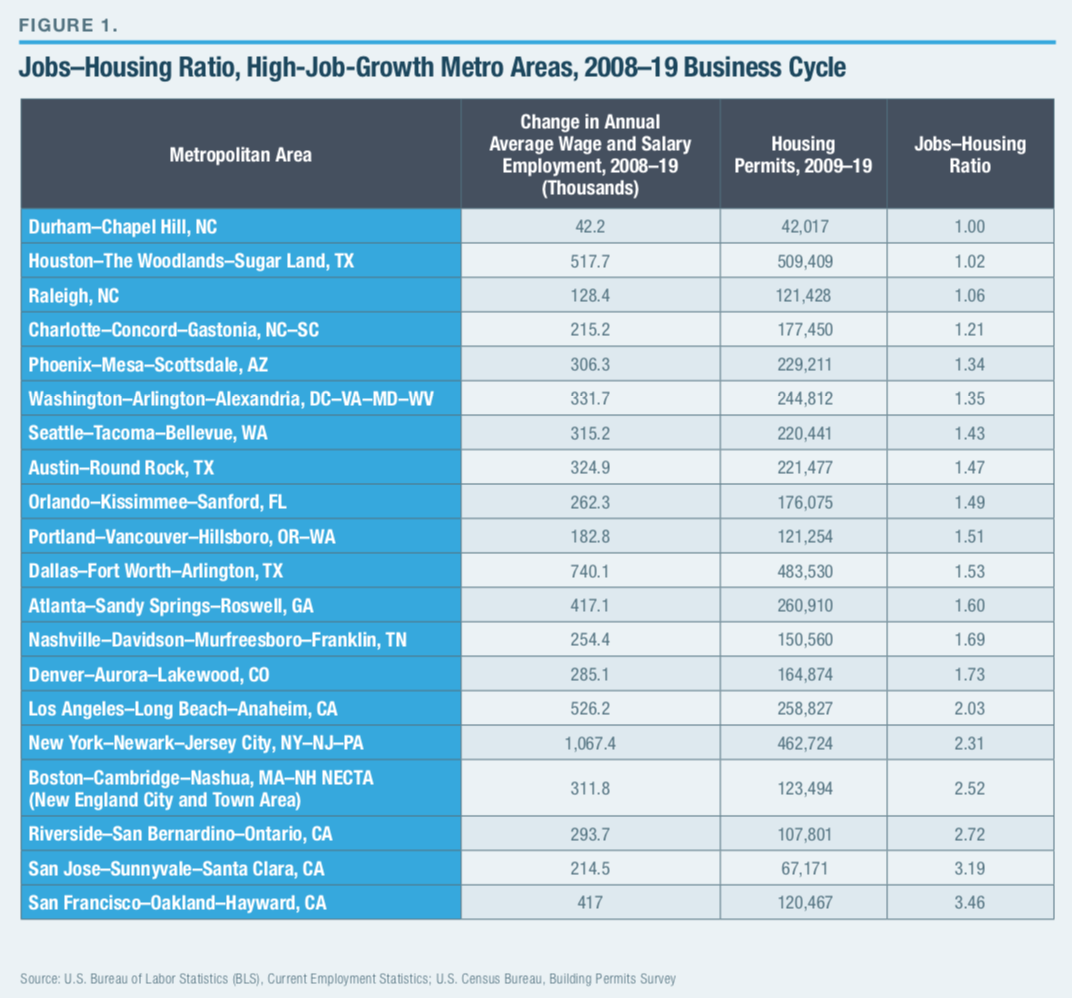The future belongs to the cities that can keep affordable housing growth properly matched to job growth. And that’s proving too difficult for some city governments, especially in states with extensive land-use regulations.
Perhaps cities like San Francisco, Boston, and New York should take a lesson or two from North Carolina. In a study just released by Manhattan Institute, three of the top five metros for smart housing-to-job ratio were in North Carolina: Durham-Chapel Hill ranked first, with Raleigh third, and the Charlotte metro close behind at fourth.
We are helping lead the nation in responsible, proportionate job-to-housing ratios, and that is important for a variety of reasons:
- Our housing-to-job ratio indicates we have fewer regulations on our books. The easier it is to build homes, the easier it will be for housing availability to keep up with job and population growth. This is essential in a state such as ours, which continues to see significant population growth.
- It helps keep the cost burden down among lower-income earners, making it more affordable for the majority in this category to shelter their families and have money left over for other necessities.
- It’s a free-market-oriented solution to government “affordable” housing programs that are heavily subsidized and more inefficient than privately owned housing options.
These are just a few of the reasons reducing land-use regulations is critically important if we hope to keep housing inventory properly matched to the job growth our state is experiencing. “The most impressive [cities] successfully achieved both [housing] density and plentiful supply. These metros are best positioned for the future,” Eric Kober, the Manhattan Institute study’s author, noted in a recent interview with Carolina Journal.
I hope local and state policymakers remain mindful of the progress our state has made, noting that we are a better Carolina than we were just over a decade ago.
There will inevitably be those who fight for more regulation and zoning, which would make homes less affordable. Our elected officials will need to remember that the economic law of supply and demand stands, even in the face of an angry resident yelling, “Not in my backyard!” at the next city council meeting.
Our policymakers have an opportunity to help our state grow responsibly by allowing free-market solutions to rise and meet the needs of our increasing population. So far, they’ve been much more successful than other cities and states at doing so. Let’s keep it up!



